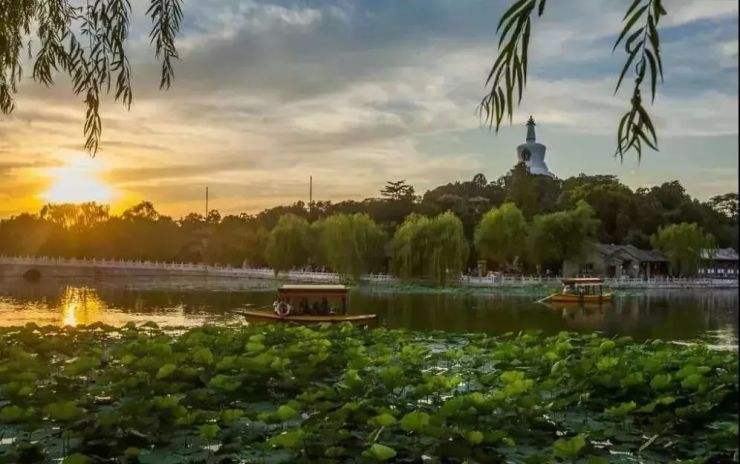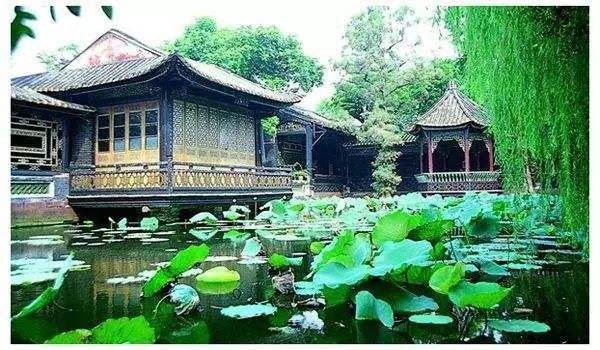Imperial Gardens in theYuan Dynasty
4 min readThe Mongolian rulers of the Yuan dynasty used to be herdsmen and nomadic people living beyond the Great Wall for generations.Yuan regime developed very fast duringthe period of military confrontation between the Song people and the Jin people.Theancestors of the Yuan rulers conquered the other tribes and established a Mongolian administration and gave it a title,Dayuan,which derived from the concept of Qian and Yuan in the Book of Changes.Later,the Mongolian troops began to expand territory by moving westward and gradually unified China.The rulers of the Yuan dynasty adopted high-handed policies and suppressed the Han people and the Han culture.Consequently,the backward philosophy of religion,the negative seclusion sentiment,and the”back-to-the-ancient”ideology seriously hindered the development of Chinese culture and civilization.
After unification,the economy was depressed.Little progress was made in theconstruction of palatial gardens.The best representatives are Yuan Dadu(the Capital of the Yuan dynasty)and Celestial lake.In addition,the suppression policy against the Han provoked their opposition.At that time,those people who refused tosubmit to the Mongolian ruler often diverted their resentment to the mountains and waters and therefore,private gardens in the Yuan dynasty developed to a certain extent.

Influenced by this trend,though large scale gardens were constructed in some places,especially Suzhou,most of them were private gardens located in rural areas.
For instance,there were Tranquil Spring Villa built by Gao Yishi,Hibiscus Manor bBai Mao in Changshu,Farming and Fishing Pavilion by Guang Fu,the Peaceful Hall by Ni Yunlin,and the Jade Mountain Thatched Hut by Gu Dehui.It was because of the strict control on urban areas that the literati would not like to live a life under discrimination and then chose to inhabit in small towns or even countryside to realize the ideal of”retreat in forested mountain”.
Imperial Gardens in the Yuan Dynasty
The imperial gardens in the Yuan dynasty were not very large and most of them were built in the capital city.Besides the palatial architecture,there were Longeivity Hill and Celestial Lake in the palace,which used to be Jade Islet in the Jin dynasty.

Yuan Dadu was the capital of Yan State,Ji,in the Warring States Period,and was both a trade center and a military fortress in the Qin,Han,and Tang dynasties.When the Jin people destructed the Liao dynasty,they moved their capital to the Ji City and changed its name into”Zhongdu”(Central Capital).In the Yuan dynasty,the Mongolian rulers built their palaces on the old site of Zhongdu and changed its name again into”Dadu”(Great Capital).There existed three major palatial halls in Dadu.
Imperial Palace,lying to the east of Celestial Lake,was situated in the south of the city axis.Forbidden Garden was constructed to the north of the imperial palace.
To the southwest of Celestial Lake was Palace of Intense Happiness for empresses,and to the northeast was Palace of Prosperity for princes.Both Celestial Lake and Forbidden Garden occupied more than half of the imperial city land.
Though built upon the old site of previous imperial gardens,the new one was reconstructed and added more architecture as needed.There appeared some unprecedented imperial halls at the time.The construction material and the innerdecorations were all those traditionally used by Mongolians,such as narra,nanmu,colored glaze,tapestry made of wool,silk curtains,and some invaluable scarlet objects decorated with golden dragons,forming a unique feature of Mongolian imperial halls which could never be seen in the previous dynasties.
Celestial Lake was named”Gold Sea”in the Jin(金)dynasty;and Longevity Hill was an aritificial mountain built in the same period and known as Jade Islet. The Jin rulers continuously made flowers and trees planted and halls constructed in the area, which gradually became the miniature of the imperial garden. In Jin times, on Jade Islet existed a Hall of Divine Light and the mountain built with the rocks torn apart from Longevity Mountain in Bianliang, the capital city of the Northern Song dynasty. When Kublai Khan constructed his imperial dwelling place in Dadu, he changed the name”Jade Islet”into “Longevity Hil1”, and “Gold sea”into “Celestial Lake”. Later, the imperial palace was built to the north of the Lake and Palace of prosperity and Palace of Intense Happiness to the west. Therefore, the three palaces just like the three legs of a tripod standing beside Celestial Lake.








